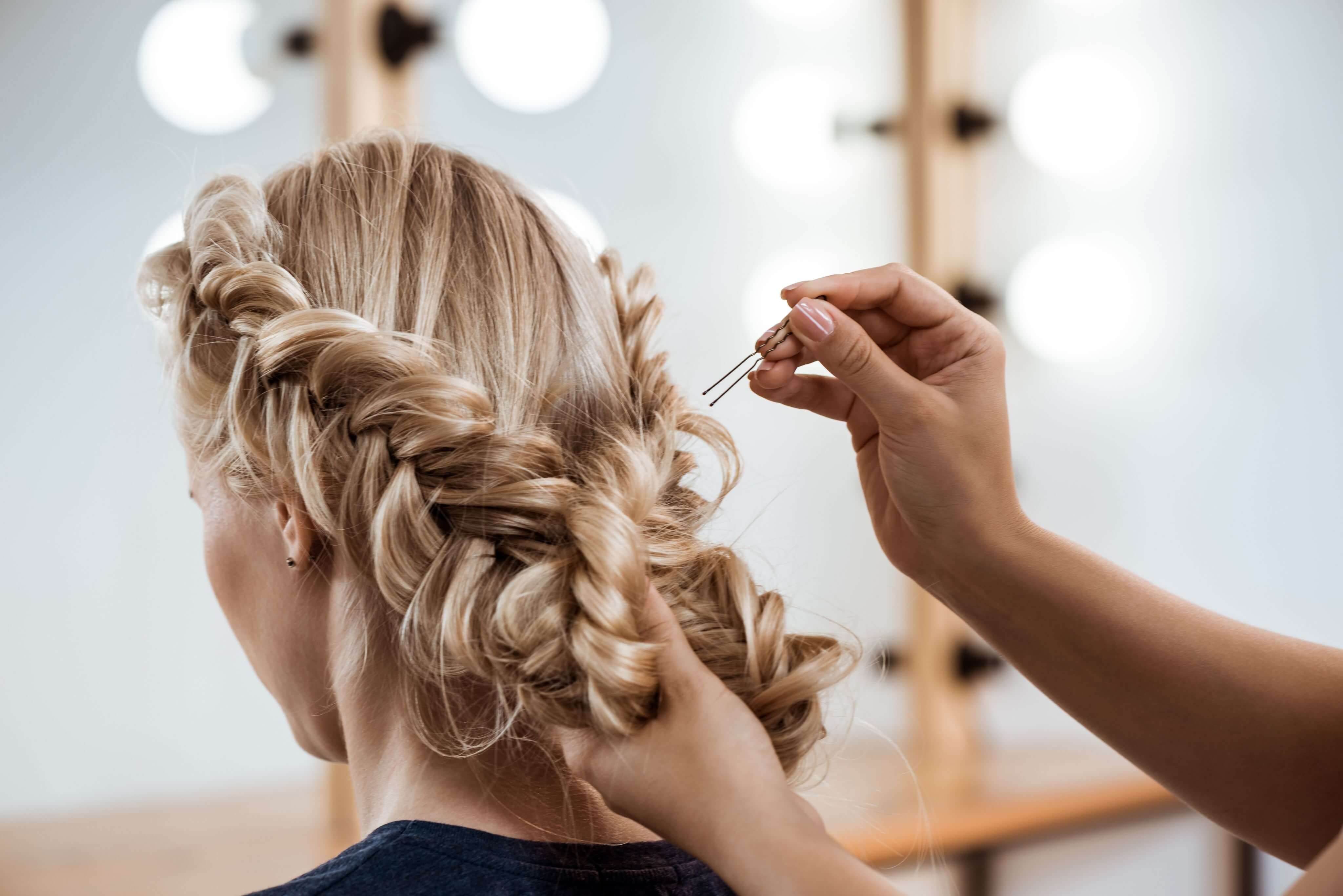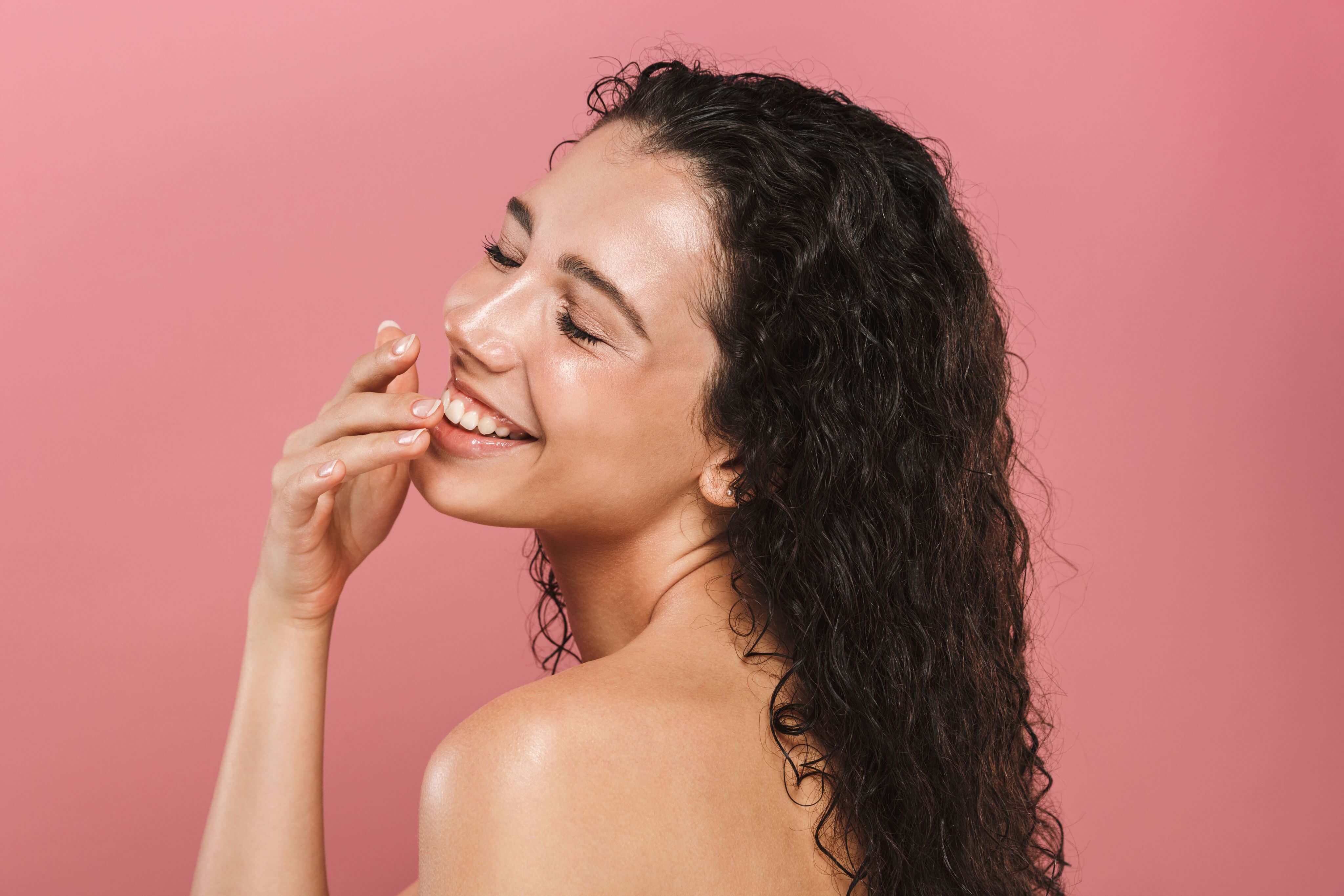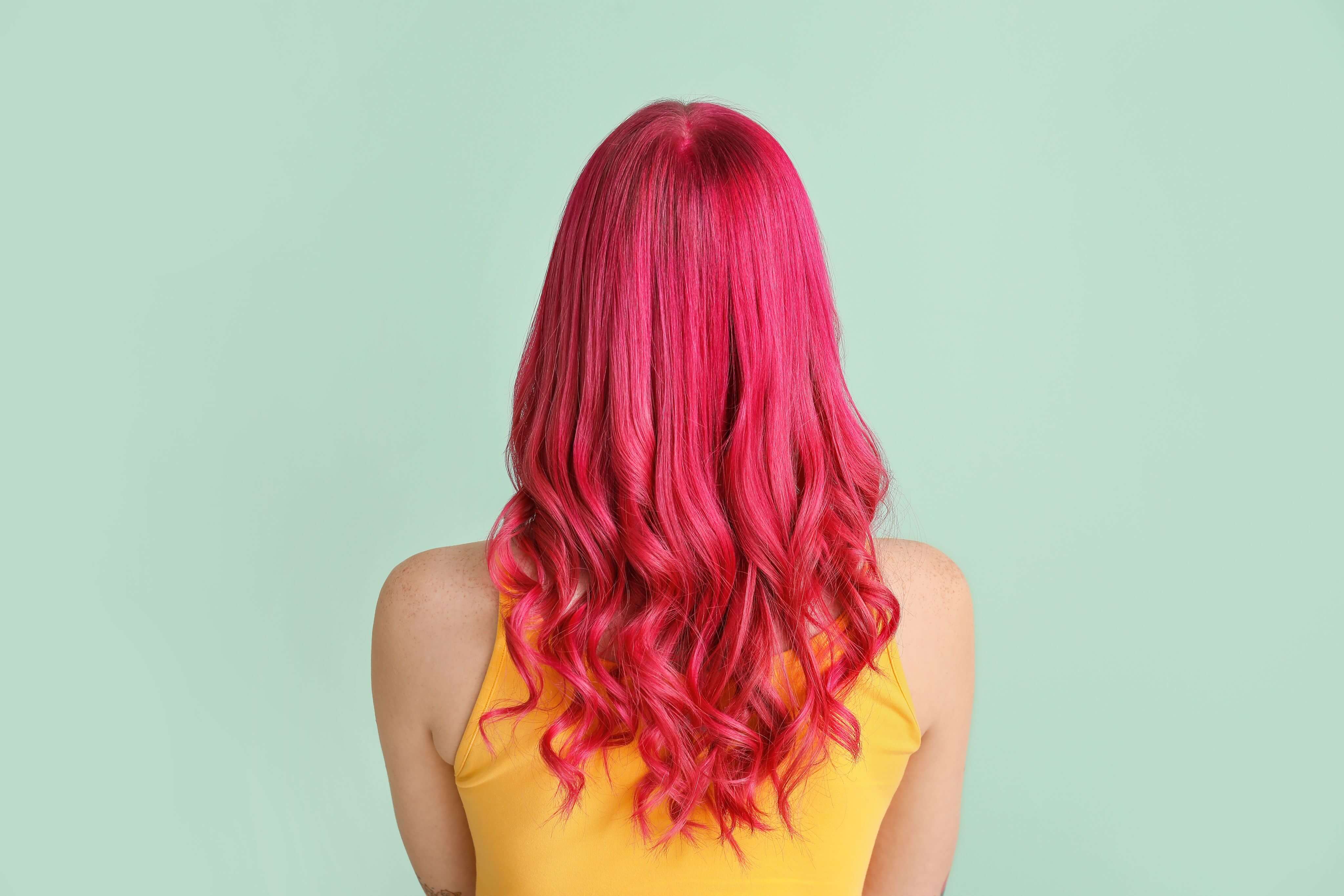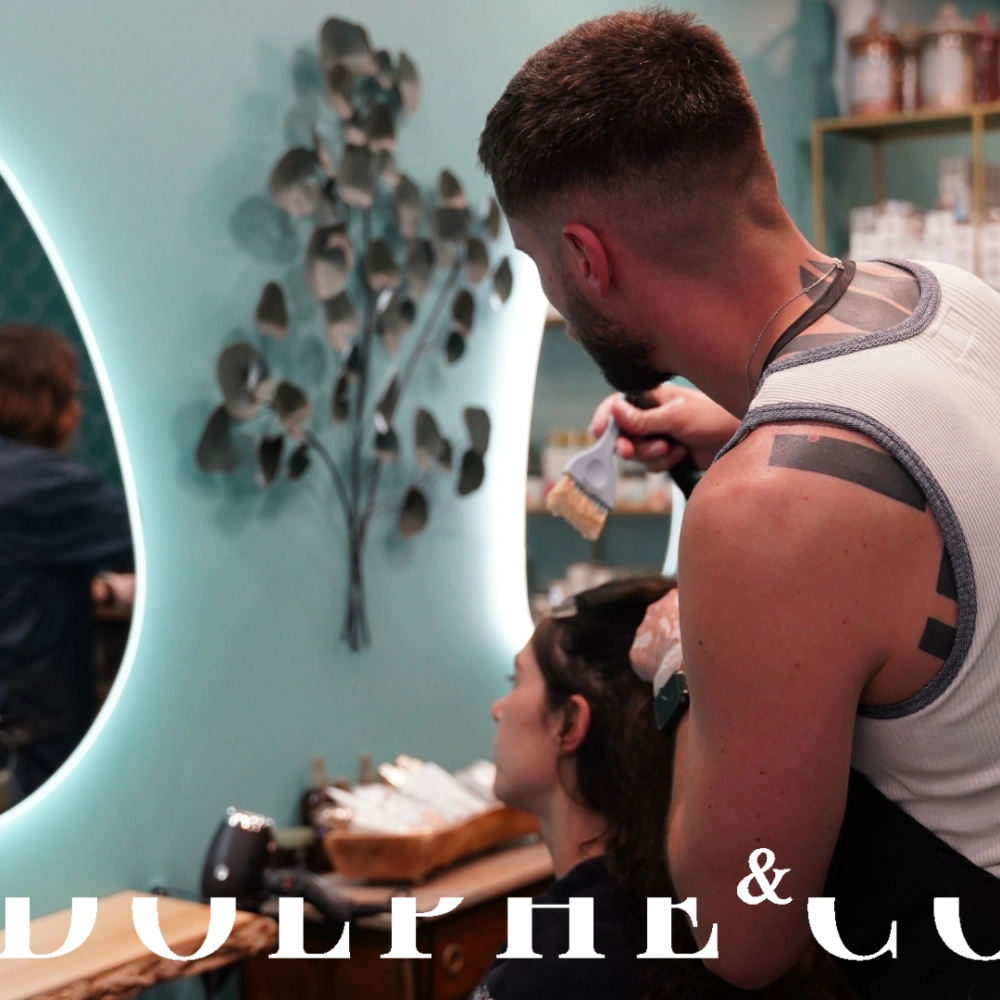
24 December 2024
Boost Your Hairdressing Career: 5 Tips to Excel in the Profession
The world of hairdressing is constantly evolving. Staying competitive and standing out from the crowd is becoming increasingly challenging. It’s crucial to stay informed about new communication strategies, engage in regular training, and create a welcoming workspace.Hairdressing is more than just a profession: it’s an art that combines technical skills and creativity. Whether you're just starting your career or dreaming of opening your own salon, excelling in this field requires a blend of passion, expertise, and tailored training.The central role of diplomas in validating your expertise cannot be underestimated. In this article, we reveal 5 essential tips to boost your career in the fascinating world of hairdressing, highlighting the keys to success to grow and thrive in this ever-changing industry. 1 - Invest in Continuous Training Hairdressing is a dynamic industry where trends evolve at lightning speed. Training is no longer just an option; it’s a necessity to meet your clients' expectations.Beyond mastering new techniques (cuts, treatments, or new coloring methods), a consistent focus on training allows you to step out of your comfort zone and develop your creativity. What training should you consider? Training opportunities are abundant and diverse. Here are some examples of programs that can help you master the emerging techniques in natural hairdressing.The following training courses are QUALIOPI-certified (state certification) and may be eligible for funding through organizations like FAFCEA or OPCO. Training in Mineral Balayage Techniques: Accompanied by a trainer and expert hair colorist in mineral coloring, you’ll discover a natural alternative to traditional balayage. In this one-day training session, you’ll learn the basics in the morning and practice on models or mannequins in the afternoon.Learn More Training in Plant-Based and Mineral Coloring: Aligned with the ecological values of the modern woman, natural coloring is becoming increasingly popular. With long-lasting results and excellent coverage for gray hair, these colorings have established themselves as top choices over the years. Rodolphe&Co offers two training courses introducing you to mineral coloring, an exclusive Rodolphe&Co alternative that is even more natural than plant-based coloring. 2 - Master the Art of Client Relationships Client relationships have become a true competitive advantage. To stand out and turn occasional customers into loyal ones, it’s crucial to build and maintain a strong, lasting relationship.“A small, loyal client base is more valuable than a larger group of occasional visitors.” How to Improve Your Client Relationships: Active Listening: Understand your clients’ expectations and personalize your offerings.Personalized Follow-Up: Demonstrate the importance of your clients through appointment reminders, after-sales advice, and feedback collection.Focus on Loyalty: Implement loyalty programs through cards, coupons, or digital apps to offer exclusive advantages to your most loyal customers. 3 - Leverage Digital Communication Channels Social media is a powerful communication tool. Use platforms like TikTok, Instagram, and Pinterest to tell your story, share your passion, and create a real community around your salon.Focus on viral content, tutorials, trends, and interactive formats to stand out and attract new clients. 4 - Optimize Your Workspace for a Better Client Experience The layout of your salon is key to creating a memorable client experience. A well-designed, welcoming space encourages customer loyalty.Consider comfortable seating, ambient lighting, and thoughtful décor to create an inviting atmosphere. 5 - Stay Updated on New Techniques and Trends The hairdressing industry is constantly evolving. To remain competitive and offer the best services, staying informed and conducting creative research is essential.Explore digital channels, industry websites, and specialized press to discover emerging trends and new opportunities for growth.Check out our 2025 training schedule and explore our hairdressing training centers in Paris and Vannes!

19 February 2024
Pourquoi choisir le balayage minéral ? Avantages et Bienfaits EN
The mineral balayage, also known as natural balayage, has been highly trendy for several years now, becoming the alternative to traditional highlighting techniques. Ideal for adding radiance to your hair, this method of hair lightening captivates with its ability to create organic and harmonious highlights, adding an extra dimension to your hairstyle.What is mineral balayage?Balayage involves opening the hair cuticle to lighten the hair by several shades. Whether your hair is light or dark, mineral balayage can enhance your hairstyle by imparting natural luminosity and shine.Unlike more contrasting techniques like traditional highlights, mineral balayage focuses on nuanced shades. Its goal is to create highlights that blend seamlessly with your natural hair color, resulting in a soft, vibrant look. The formulation of mineral balayage also acts as a genuine hair treatment, leaving the hair soft, hydrated, and radiant.Benefits of mineral balayageFormulated with natural minerals and applied gently, mineral balayage offers several benefits for hair health. Unlike harsher chemical treatments that aggressively strip natural pigments by opening the hair cuticle, mineral balayage gently lightens the hair with minimal damage.What are the aesthetic advantages of mineral balayage?Natural appearance: Mineral balayage mimics subtle color variations found in natural hair, achieving a final look very close to natural hair tones, seamlessly blending with your hairstyle.Soft light effect: Mineral balayage creates soft highlights and shades in the hair, offering a gentler, more organic light effect compared to some chemical coloring techniques.Unique result: Mineral balayage allows for great customization. The amount applied and the balayage technique can be adjusted to create a personalized look that meets your expectations.A multitude of shades: Suitable for a wide range of hair colors and types, mineral balayage is perfect for those seeking a subtle transformation or a more dramatic change.The Rodolphe&Co Mineral BalayageAt Rodolphe&Co, we use our own lightening powder: Mineral Whitener. Formulated with natural minerals, diamond powder, and white clay, it can lighten hair up to 6 tones, offering natural highlights that respect your hair.Unlike chemical counterparts, mineral balayage is gentle on the hair fiber and does not weaken it. It is free from chemical allergens such as PPD, resorcinol, ammonia, parabens, or silicones, protecting both your hair and the environment from harmful substances.Ideal for adding depth to your hair, mineral balayage can be used on both mineral and plant-based hair colorings. (Mineral Whitener is the only one to offer a brightening effect on plant-based hair color).Maintaining your mineral balayageTo preserve your balayage and keep your hair healthy, follow these tips:Moisturize your hair: Use hair masks like Rodolphe&Co's High Hydration Mask. Pair it with deep treatments like Botanical Oil to maintain your balayage's radiance while nourishing your hair and protecting it from dryness.Avoid chemical treatments: Choose natural products suitable for colored hair. Look for shampoos and conditioners without sulfates, silicones, or parabens. Products free from harmful chemicals help extend the life of your mineral balayage.Protect your hair from the sun: Whether in summer or winter, UV rays can damage your hair. Use hair products with UV filters such as Pearl Jelly to protect against sun damage.Regular touch-ups: Mineral balayage creates smooth transitions between natural hair colors and added nuances, resulting in less noticeable roots compared to bleaching techniques. However, regular touch-ups are essential to maintain the brilliance of your highlights.If mineral balayage has caught your interest or you'd like expert advice, you can schedule an appointment at our salons in Vannes or Paris, or visit our partner map.

26 January 2024
Quelles sont les 5 tendances coiffure incontournables de 2024 en

04 December 2023
How to Use Styling Products for Long-Lasting Hairstyles
Styling Products: How to Achieve Long-Lasting HairstylesWhether you prefer smooth, wavy, curly hair, or are a master of the art of tousled styles, now is your moment. Dive into the world of gels, hairsprays, mousses, and other natural styling products. Get ready to discover tips, advice, and product recommendations that will help you maintain your impeccable style from morning to night, even on the longest days!How to Choose the Right Styling Products?Waxes, sprays, serums, and texturizing powders—there are so many styling products that it's easy to get lost! So, how do you know which one is right for you? Let's first review in detail the most common styling products and help you find the perfect match.Gel: The most popular styling product, but are you using it correctly? Gel provides firm hold, ideal for structured and defined hairstyles.Hairspray: Available in light to strong hold, hairspray excels in maintaining hairstyles, from simple ponytails to sophisticated curls, while retaining flexibility. We recommend using Rodolphe&Co botanical hairspray, a short and effective formula that is 100% naturally derived. Ideal for setting your blowout or hairstyle.Mousse: If you have wavy or curly hair and want to add texture, styling mousse is your ally. Loved for adding volume and texture to your hair, it offers a light and flexible hold. Want more volume? Scrunch your hair with your hands, even hours after application!Wax: Short to medium hair enthusiasts looking for textured and tousled looks, wax is your go-to. It defines individual strands while allowing freedom of movement.Spray: Perfect for those seeking a natural and light hold for their hairstyles without weighing down their hair.Remember, each type of styling product has its own characteristics, and the choice depends on the hairstyle you want to achieve. Don't hesitate to experiment with different products and techniques to find the perfect combination. You can mix certain styling products for personalized results, but it's important to understand how these products interact to avoid undesirable outcomes.How to Apply Styling Products Effectively and Durably?Preparing your hair before applying styling products is essential for achieving the best results. Here are some steps to follow to prepare your hair before applying styling products:Remove Residues: Start by washing your hair with shampoo and conditioner suitable for your hair type. Rinse thoroughly to remove any residue from your hair.Dry Your Hair: Gently towel dry your hair to remove excess water. Avoid vigorous rubbing, as this can cause frizz. Some styling products like styling paste, styling emulsion, or ocean mist can be used on damp hair.Detangle Your Hair: Use a wide-tooth comb or detangling brush to remove knots and detangle your hair if necessary. Some styling products, such as pearlescent jelly, act as hair detanglers.Use the Right Application Technique:For Gels, Mousses, and Creams: Apply evenly using your fingers or a comb. For gel, ensure the product is distributed to avoid sticky residue.For Waxes and Pastes: Warm the product between your palms before applying for even distribution.For Hairsprays and Sprays: Maintain an appropriate distance and spray evenly over your hair.Add a Final Fixation: If you want additional hold, use a finishing spray to seal your hairstyle.Our Tips for Better Hold:Now that you've found the right products and the unique blend that suits you and have all the keys to apply your styling product effectively, yet your hairstyle doesn't last as long as you'd like. Don't worry, we'll go over the most common mistakes that lead to a hairstyle that doesn't hold.Using Too Much Product: It's tempting to use a large amount of product to achieve the desired result, but this can weigh down your hair, make it greasy, and compromise hairstyle hold. Apply a small amount of product and gradually add more if necessary.Uneven Distribution: Make sure to evenly distribute the product throughout your hair. This ensures that each strand is protected and creates uniformity in your hairstyle.Improper Mixing: As mentioned earlier, some products do not mix well with others. Read the instructions on your styling products carefully and check if they are compatible.Constantly Touching Your Hair: Avoid touching your hair frequently, as this weakens your hairstyle.Forgetting Touch-Ups: If necessary, don't hesitate to touch up your hairstyle throughout the day to maintain its shape.Choosing the right styling products and adopting a routine tailored to your hair type is the key to a successful hairstyle. Whether you're looking for a light hold for a natural look or a stronger hold for elaborate hairstyles, understanding your hair needs is essential. So, arm yourself with your favorite styling products and get creative!

Fall is already well underway, the leaves are falling, the cold is settling in, and warm, coppery colors are making their appearance. So why not try a hair transformation?Copper is the trending shade of autumn. What better way to blend perfectly with nature than with coppery highlights?But, copper remains a bold choice. How do you find the copper shade that suits you? How do you maintain it, and which care products should you use to keep the color vibrant and bright?This is what we'll explore in the rest of this article!Why Opt for Copper Hair ColorThe world of hairdressing is constantly evolving, offering a wide range of copper shades that allow for infinite personalization of your color. From the subtlest to the most intense hues, there is a shade for every desire.Harmony with Autumnal Tones Copper tones evoke the warm, golden hues of autumn. By choosing a copper hair color, you can create visual harmony with the autumn environment, giving a seasonal and cohesive appearance.Warm Up Your Complexion Copper tones bring warmth and brightness to the complexion, which is especially appreciated when the days shorten and skin tends to appear paler in autumn. A copper hair color can give your skin a healthier and more radiant look.Contrast with Autumn Outfits Autumn clothes tend to be darker and more neutral-toned. From pine green to beige, copper hair creates a lovely contrast with these colors.Copper for Everyone With a wide range of shades available, it is possible to find the copper tone that suits your complexion or skin color. There is a copper shade for you!The Different Types of Copper Hair ColorIn hairdressing, there is a variety of shades available to create a copper effect, ranging from light red to dark red. Here are some commonly used shades:Light Red: A subtle and bright shade, light red is a light copper, close to light orange.Copper: Ideal for creating a bright and warm copper look, copper is a mix of red and orange.Auburn: Positioned between red and brown, it gives a look that can vary from reddish-brown to copper-red.Venetian Red: A combination of light red with copper and golden highlights.Copper Red: A more pronounced copper with more marked red highlights.Mahogany: Darker than copper red, it's a rich shade with dark red and brown highlights.Not sure which shade to choose? Perform an online personalized diagnosis.How to Maintain Copper HairMaintaining copper hair is essential to preserve its beauty and prevent fading. Here are some tips to maintain your color:Avoid Hot Water Hot water contributes to rapid color fading. We recommend using lukewarm or cool water to minimize color loss.Wash Less Frequently Avoid washing your hair every day, as frequent washing can reduce the natural oils that help maintain the color. Try to space out washes to every 2-3 days to preserve your color.Use Suitable Products Opt for shampoos and treatments specifically formulated for colored hair. Our shampoo and mask for colored hair are Keraguard patented. Formulated with dragon’s blood, these products are designed to protect the hair fiber and maintain the brightness of your color.Example Routine for Colored Hair:Apply a small amount of Rodolphe&Co shampoo for colored hair to wet hair, lather, then rinse. If necessary, repeat the process, letting it sit for a few minutes before rinsing again.To perfect your colored hair routine, use the colored hair treatment in addition to the shampoo at each wash. Apply to towel-dried hair from roots to ends, comb through, then let sit for 5-10 minutes before rinsing thoroughly.We recommend replacing these products with the Greenleaf mineral shampoo and conditioner if your color was done with Greenleaf coloring kits.Ban Sulfate-Containing Products Hair products containing sulfate and other chemicals will eventually strip the natural oils from your hair. This accelerates color fading and dulls the color.Do Regular Touch-Ups Schedule regular touch-ups every 4-6 weeks to maintain the color and correct changes.Home Coloring: Mistakes to AvoidWant to do your copper color yourself with Greenleaf natural coloring kits but afraid of compromising the final result?Here are the keys to a successful home coloring!Avoid Too Much Contrast: Choose a color close to your natural color to avoid overly contrasting or artificial results.Respect the Dosage: Reducing or increasing the doses will not make the color more vibrant or create more marked highlights. Just like a recipe, not respecting the dosages will create imbalances and may lead to disappointing results.Avoid Under-Saturating the Hair: Apply the color generously and evenly to ensure it takes well and meets your expectations.Respect the Processing Time: Be patient and respect the processing times. For natural coloring, the processing time is usually between 60 to 90 minutes.Don’t Neglect Maintenance: Maintaining your color is essential for keeping your copper bright and radiant.By avoiding these common mistakes, you increase your chances of achieving a successful and long-lasting copper color. However, if you still have doubts, it is always wise to consult a professional hair colorist.

No more result
No more result






.png)




 (9).png)

Learn
together
